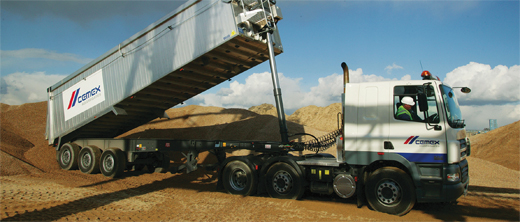
We show you how to get hold of the qualification you need to gain work in the UK aggregates/quarrying industry – though most of the skills provided by the course are applicable to any truck driving job
By Dougie Rankine
PHOTOGRAPHY DOUGIE RANKINE / CEMEX
This month’s Driver CPC feature is dedicated to those who drive – or are looking to drive – tippers in the aggregate industry. You may have heard of the MPQC/EPIC Drivers Skills card, and if you’re already driving trucks in quarry sites you may already have one. It’s an industry-wide initiative backed by the Mineral Products Association (or MPA, who all the big players are part of – including CEMEX, Tarmac, Breedon, Lafarge and many more). It has been designed to improve safety, heighten awareness and reduce accidents.
MPQC stands for Mineral Products Qualification Council, which, as an awarding organisation, offers a wide range of qualifications specifically designed for the quarrying, mineral products and mining sector. Over the years the course has been adapted to Driver CPC. Course duration is one full day, and you can get seven hours towards periodic training by attending.
The course we attended was run by CEMEX in Scotland, at the company’s head office in Uddingston, and training was provided by Focale Training.

Although it’s commonly called the ‘EPIC’ card course, it is in fact known officially as ‘Site Safety Awareness and Safe Behaviour for Road Hauliers’. The card’s official title is the MPQC Driver Skills Card. It does differ somewhat from most DCPC courses – you won’t be sitting there and dozing off in the afternoon! There’s a lot of much-needed input required from attendees, with case studies to look at and discuss and even a test at the end.
It has evolved into primarily a Health & Safety-based course and some of the stuff you’ll sit through is a real eye-opener. The fact is this: Since 2000 and the launch of the Hard Target Initiative aimed at reducing accidents in the Quarry Industry (which traditionally had a poor Health & Safety record), there has been an 83 per cent reduction in accidents. While that is a fantastic achievement, accidents are still happening. More needs to be done to understand the root cause and minimise risks where possible through improved and revised processes, robust systems for reporting, instruction and adherence.
 Read the rest of this feature in the April issue of Trucking – available here
Read the rest of this feature in the April issue of Trucking – available here






